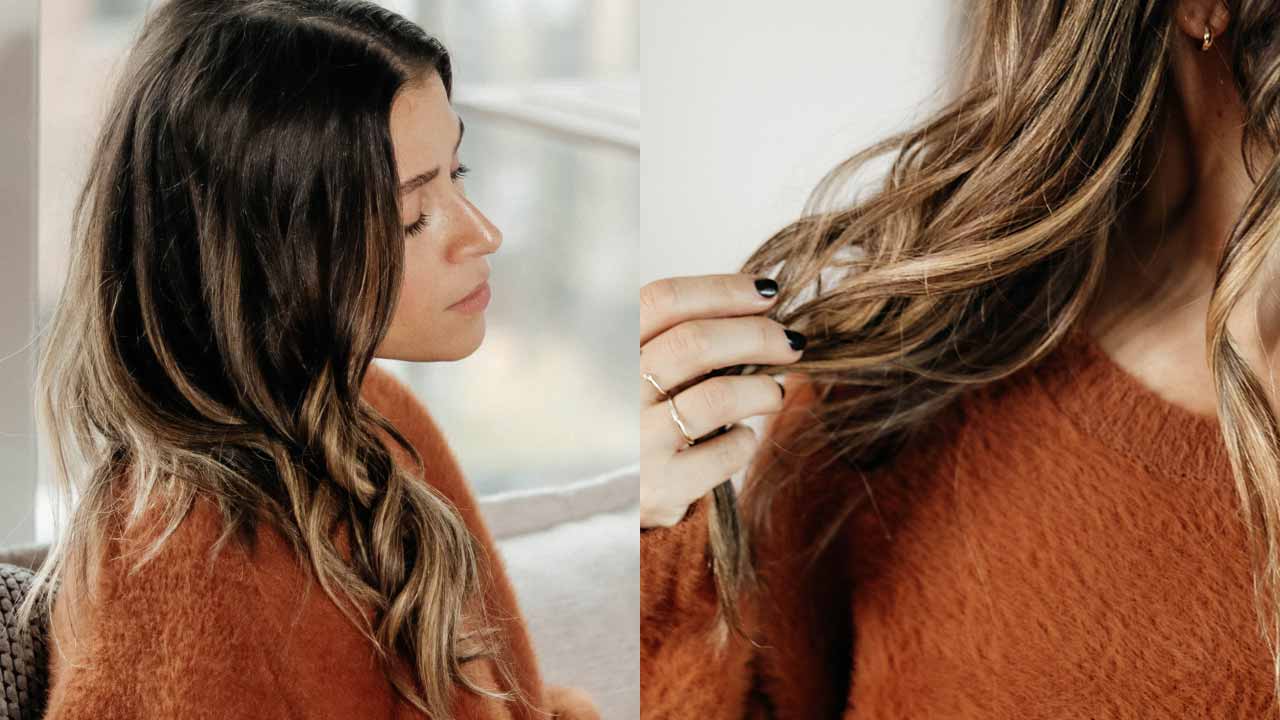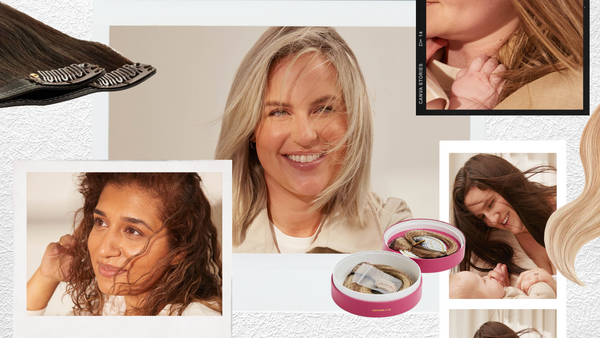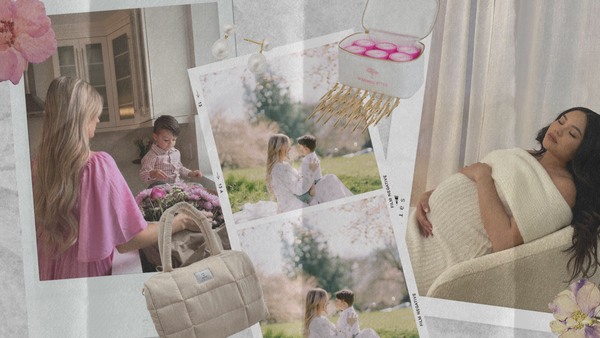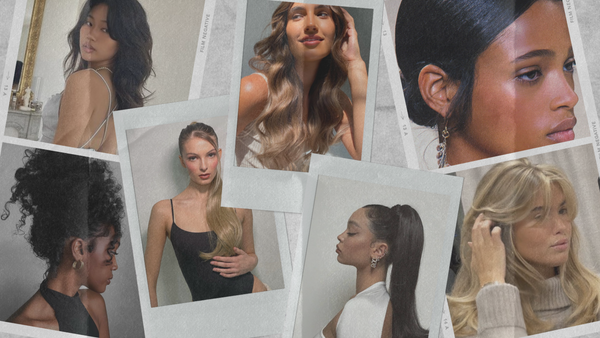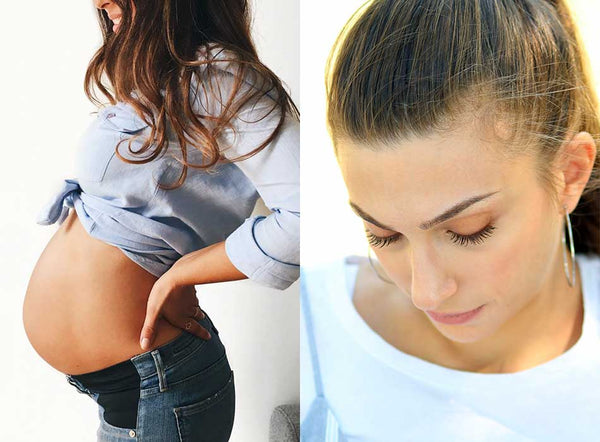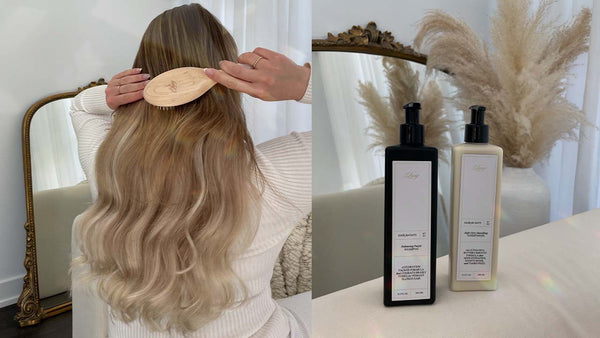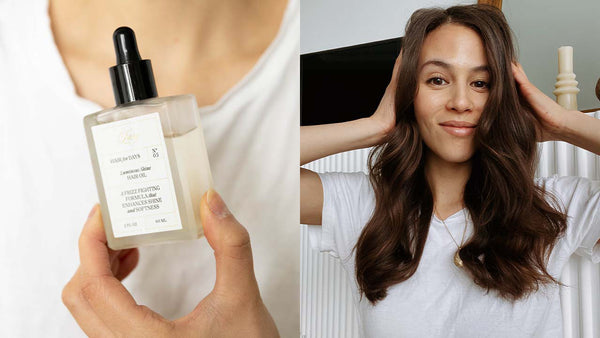Another year older, another year wiser. Or so the saying goes. While your birthday is definitely grounds for celebration, there’s no denying that aging can do a number on the hair. Just like skin, the hair on your head changes with age. From coarse, unruly strands that look like they could start a brush fire, to visibly thinning hair and unwanted bald spots, many of us know firsthand just how challenging hair texture changes can be.

Over time, your hair may become more curly, straight, thin, or coarse. Many of these changes are brought on by the maturation process, but there are also plenty of reasons why this could be happening that have nothing to do with age. Stress, diet, and hormone changes all play a part in your hair’s texture.
If you’re dealing with hair texture changes, we have everything you need to know about what is happening with your locks. Keep scrolling for a breakdown of the potential causes of hair texture change and several solutions for combating the problem. Plus, we’re sharing our favorite age-defying hairstyles.

Hair texture change: why it happens
While changes in hair texture can be unnerving, the most important thing to note is that you are not alone. Hair texture usually changes throughout life, shifting with hormones, metabolism, and overall internal health. Here are some of the common causes of a change in your hair texture.
Genetics and hereditary traits
Genes play a large role in determining how much our hair will thin as we age. If you want to get a good idea of how your hair may change over time, just look at your parents. If you have a genetic predisposition to thin hair, a reduction in hair volume can occur as soon as you hit puberty. For those with little or no genetic predisposition, hair thinning can be much milder.
The most common cause of hair loss, Androgenic alopecia, is hereditary and leads to an overall reduction in hair volume over time. This genetically determined type of hair loss typically occurs along the top of the head when hair follicles that are overly sensitive to normal levels of androgens (male hormones) become smaller, making hair thinner with each passing hair growth cycle.

Hormone changes
Hormones have a big impact on your hair. Menopause, in particular, can trigger hair texture changes, as it causes androgen hormone levels to increase. Hair-friendly estrogen (female hormone) levels drop in the body and androgens rise in response. While androgens do not necessarily decrease hair, they reduce hair’s diameter, resulting in an unwanted loss of volume.
Hormonal fluctuations also affect your hair during and after pregnancy. When you’re pregnant, you may notice that your hair is thicker, shinier, and longer. This is due to higher estrogen levels and increased blood flow that naturally occurs in the body during pregnancy, which slows down the normal rate of hair fall. However, once you give birth to your baby, these estrogen levels drop. The sudden change causes sudden and significant postpartum hair loss, typically beginning two to four months after childbirth.
While it can be alarming to find large chunks of your hair in the shower drain, don’t panic! Most women do not typically lose more than what would have occurred during the 9 months of pregnancy. The hair loss just feels more dramatic because it is happening all at once. According to experts, new moms can lose up to 400 strands in a single day!

Heat, diet, and stress
Our day-to-day routines also play a huge role in our mane’s overall health. If you’re usually noticing thinning toward the ends of your hair instead of at the roots, heat may be the culprit. This is because we tend to run our curling or flat irons over our ends, causing dryness and brittleness. Luckily, this type of texture change is easily preventable. Just cut back on the heat styling and use protective products, like thermal styling sprays.

Diet also plays a role in hair texture. If you’re not getting enough protein, iron or essential fatty acids like omega-3s in your diet, your strands may become thinner. This is because your hair requires high levels of nutrients to reproduce. Stock your fridge with foods like salmon, avocado, oysters, and eggs for healthier hair.
Another big cause of hair texture change is stress. With demanding professional and personal lives, we all experience stress from time to time. Unfortunately, stress can raise levels of male hormones, causing hair to shed and appear thinner. Since the average person loses 50 to 100 strands of hair a day, shedding should only be considered a problem when you notice an excessive amount of hair loss. Some easy ways to reduce your stress include getting enough sleep and hitting the gym regularly.
Fighting texture changes
Noticing that your hair is becoming thinner? Having crazy texture changes? Don’t panic. There are several solutions available that can work wonders on your hair. Along with managing your stress and eating a protein-rich diet, we recommend using hair oils. A great TLC remedy for aging hair or hormonal hair changes is castor oil, since it is rich in Vitamin E, proteins, and minerals. It moisturizes hair and promotes blood circulation in the scalp, which can lead to quicker hair growth.

Try a fresh hairstyle
While we don’t really have much of a choice about growing older, there are options available when it comes to styling your hair. Freshen up your look with hairstyles that make you look younger. Whether you opt for face-framing highlights or decide to give bangs a try, there are plenty of ways to disguise thinning hair and unwanted texture changes with our best clip in hair extensions.
Fringe Is In
Bangs are having a total moment right now. From soft and wispy to blunt and feathery, there are plenty of fun fringe styles to test out. But, if you’ve ever gotten bangs before, you know they can be a roller coaster of emotions. Not only do they take a lot of work to maintain, but they take FOREVER to grow out. Luckily, our new clip-in bangs collection (coming soon!) will give you enviable bangs—without the commitment. These bangs are a great idea for anyone who is afraid to take the plunge into real bangs. They also offer extra volume for those experiencing thinning hair.
Wondering if bangs will make you look younger? The best way to find out is to take our clip-in bangs for a spin. Style them in a way that says “I woke up like this” by using styling tools, fingers or a brush to blend your hair with the bangs. You can use a straightener to smooth out bangs or a curling iron for extra volume. Washing and conditioning the bangs regularly will keep them soft, shiny, and ready to use at a moment’s notice. Unlike other hair extensions, Luxies won’t cause any damage to your hair. They can be clipped in or taken out whenever you want and will cause zero harm to your natural hair.

Beautiful hair, at any age
The relationship you have with your mane is a lifelong journey. For better or worse, hair texture changes are a normal part of aging. The good news is, beautiful, silky and full hair is possible to achieve at any age. Whether you’re experiencing texture changes or thinning locks, these hair changes can be an opportunity to try new looks and mix up your hairstyle for the better.
Written by: Mikayla Uber
